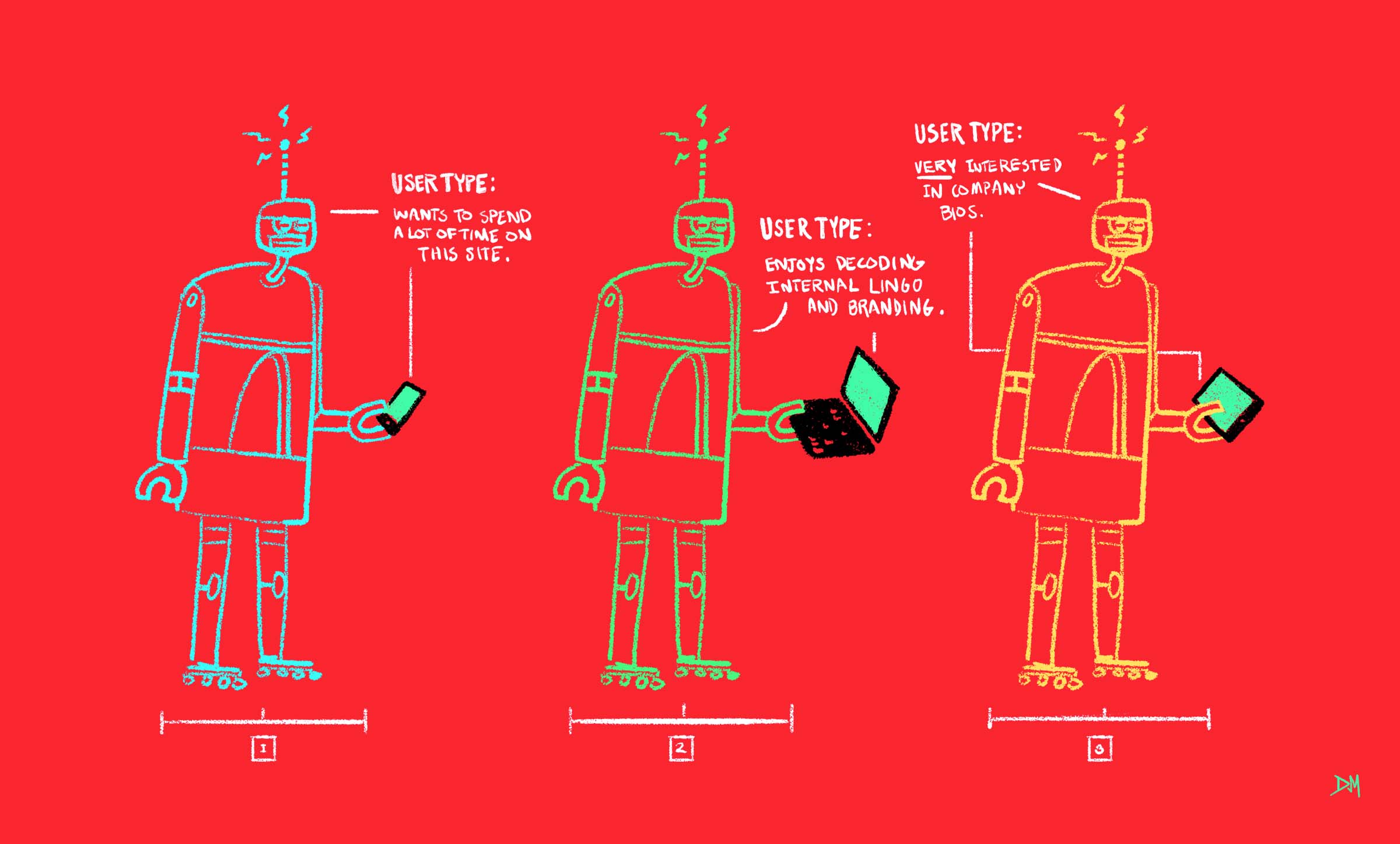Dramatically Reduce Project Risk Through Discovery
5 min read
Faced with deadlines and budget concerns, you might be tempted to skip the Discovery process entirely. But it could be exactly what you need to safeguard your project against certain failure.
Want results?
Discovery is the research and planning phase before a project begins, when everyone involved hammers out project requirements and expectations: goals, scope, timeline, and budget. It provides a sure path from the murky unknown to a clear vision of what your project can and should be, which makes it a great investment in your project’s immediate and long-term success.
And it’s much cheaper than failure.
Minimize risks to minimize failure.
When you identify the need for a new site or app, your first question is probably how long development will take. After all, your users and stakeholders are demanding results—yesterday. You’ll want to dive right in. But you need a more methodical approach.
It can be hard to justify spending time and money on anything that isn’t directly tied to a tangible end product, like design and development. However, you can dramatically reduce big project risks like misalignment or missed deadlines by creating a clear, actionable way forward, informed by real needs before you start your project.
Kill Project Risk with Discovery
Here are some of the ways Discovery reduces project risk so you can sleep easy at night knowing your efforts won’t go to waste.
Define the right solution by engaging deeply with users.
The biggest but most common mistake in developing a new site or app is assuming that you know your users. Users have different needs based on their task and roles, and you can’t anticipate all of them. Heck, even users can’t completely communicate their needs because they aren’t the technical experts. They know their pain points, though. They know their frustrations. Listening to users gives you first-hand insight into the actual problems your users face and, most importantly, how you can solve them.
Get important feedback and buy-in from stakeholders.
Everyone who is involved in your site or app will need a say: those who depend on it, those who maintain it, and those who are otherwise invested in its success or failure. Discovery gives you a chance to take formal inventory of who to include in the conversation, something that might get missed otherwise. If your stakeholders are busy, the Discovery process also gives you the perfect excuse to get in the same room with them. You want to make sure their needs are factored in early, before it’s a problem.
Late-game stakeholder input is a major project risk you can easily avoid. By talking to them during Discovery, you can make sure they’re allies now instead of adversaries later.
Track success with real metrics.
You know you want a better product than before, and you have ideas on how to make that happen, but how will you know if you’ve succeeded? How will you prove that your ideas were worth investing time, money, and resources in? You’ll need to track where you’re at against where you end up.
Discovery helps you define what success looks like. Once you know your desired outcomes, informed by actual user needs and tasks, you’ll be able to identify trackable metrics for knowing you’ve accomplished these outcomes. Armed with your current numbers and your post-launch performance, you’ll have measurable, tangible proof of your success to show higher-ups.
Identify and solve the deeper problems.
If you’re redesigning an existing product, it’s all too easy to focus on patching the problems in front of you. However, the methodical engagement with your project in Discovery allows you to uncover comprehensive, hidden pain points across the board—for users, stakeholders, and your business.
Ask yourself: do you want to keep doing patchwork fixes? Or do you want to address the deep, systemic problems you need to solve that have been plaguing you for years? Discovery will help you solve the big issues.
Get clarity so you know what to do (and not do).
Discovery, when your vision is still nebulous and unformed, allows you to step back from what your current site or app is like to think about what it can be. It’s the “dream big” stage, and it’ll yield a wealth of information, ideas, and possibilities. But the real work here is to plot a clear path forward. That means less words, more thought.
As you sift through the research and requirements, you’ll cut through the noise and identify specific, actionable tasks based on your end goals. And as you move through the project or onboard others, this clarity will keep the vision for your product in focus. When faced with tough decisions or tight resources, you’ll have a clear path forward anchored by sound research and logic.
Garner buy-in with an actionable plan.
A bank won’t fund a business loan without a clear plan for success. And it’s going to be hard to garner buy-in on an abstract idea. Discovery lets you identify the actual value or service you’re providing users, backed by a specific plan rooted in reality. This shows a clear path to success that everyone can easily review and confidently signoff on as needed.
Understand the real effort and cost.
Have you ever started a fun weekend project that soon turned into a whole-month project (which wasn’t very fun anymore)? When you dive into a new project, even if it seems manageable, there’s a very real chance that it will demand far more time and resources than you were prepared to give.
Discovery gets you to define a specific scope of work and a timeline for that work to be completed in. Otherwise, you’re just guessing without the benefit of careful thought and research. And guessing never works. However, with a clear vision of the work ahead, you can easily deal with any budget or timeline restrictions.
The Successful Way Forward
At its most basic, the Discovery process documents the current, problematic state of things and outlines a future, desired state. However, the real value is in seeing how to get from point A to point B without wandering off course. Wandering is fine if you’re an intrepid explorer of new lands, but not so much if you’re hoping to get to product launch anytime soon or anywhere close to budget.
Discovery removes big project risks to make sure you end up with a site or app your users can’t do without. And in the long run, that helps you save on the important things: time, money, resources, and sleep.





